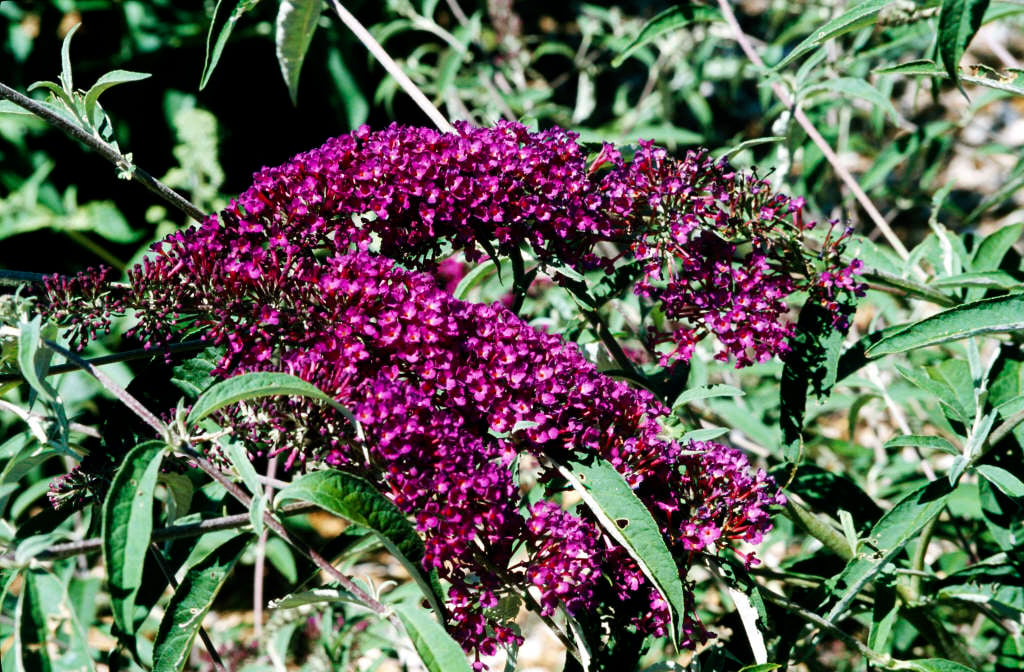Buddleja davidii Nanho Purple ('Monum')

butterfly bush [Nanho Purple]
A compact shrub with lance-shaped leaves and fragrant, light purple flowers in dense cylindrical panicles in summer and autumn
Other common names
butterfly bush 'Nanho Petite Indigo'butterfly bush 'Nanho Purple'
Synonyms
Buddleja davidii 'Monum'Buddleja davidii 'Petite Purple'
see moreBuddleja davidii 'Nanho Petite Plum'
Buddleja davidii 'Nanho Petite Purple'

Buy this plant
Size
Ultimate height
1.5–2.5 metresTime to ultimate height
2–5 yearsUltimate spread
1.5–2.5 metresGrowing conditions
Moisture
Well–drainedpH
Acid, Alkaline, NeutralColour & scent
| Stem | Flower | Foliage | Fruit | |
| Spring | Green | |||
|---|---|---|---|---|
| Summer | Purple | Green | ||
| Autumn | Purple | Green | ||
| Winter |
Position
- Full sun
Aspect
South–facing or West–facing
Exposure
Exposed or Sheltered Hardiness
H6Botanical details
- Family
- Scrophulariaceae
- Native to GB / Ireland
- No
- Foliage
- Deciduous
- Habit
- Bushy
- Genus
Buddleja can be evergreen or deciduous shrubs, occasionally trees or scrambling climbers with simple leaves and panicles of small, tubular fragrant flowers
- Name status
Trade
How to grow
Cultivation
Grow in fertile well drained soil in full sun. See buddleja cultivation for more detailed advice
Propagation
Suggested planting locations and garden types
- Wildlife gardens
- City and courtyard gardens
- Coastal
- Flower borders and beds
Pruning
Prune annually in early spring back to a low framework, pruning group 6
Pests
May be susceptible to aphids, capsid bugs, caterpillars, earwigs, figwort weevils, glasshouse red spider mite, leaf and bud eelworm, and mullein moth
Diseases
May be susceptible to honey fungus, fungal leaf spot, and virus diseases
Get involved
The Royal Horticultural Society is the UK’s leading gardening charity. We aim to enrich everyone’s life through plants, and make the UK a greener and more beautiful place.